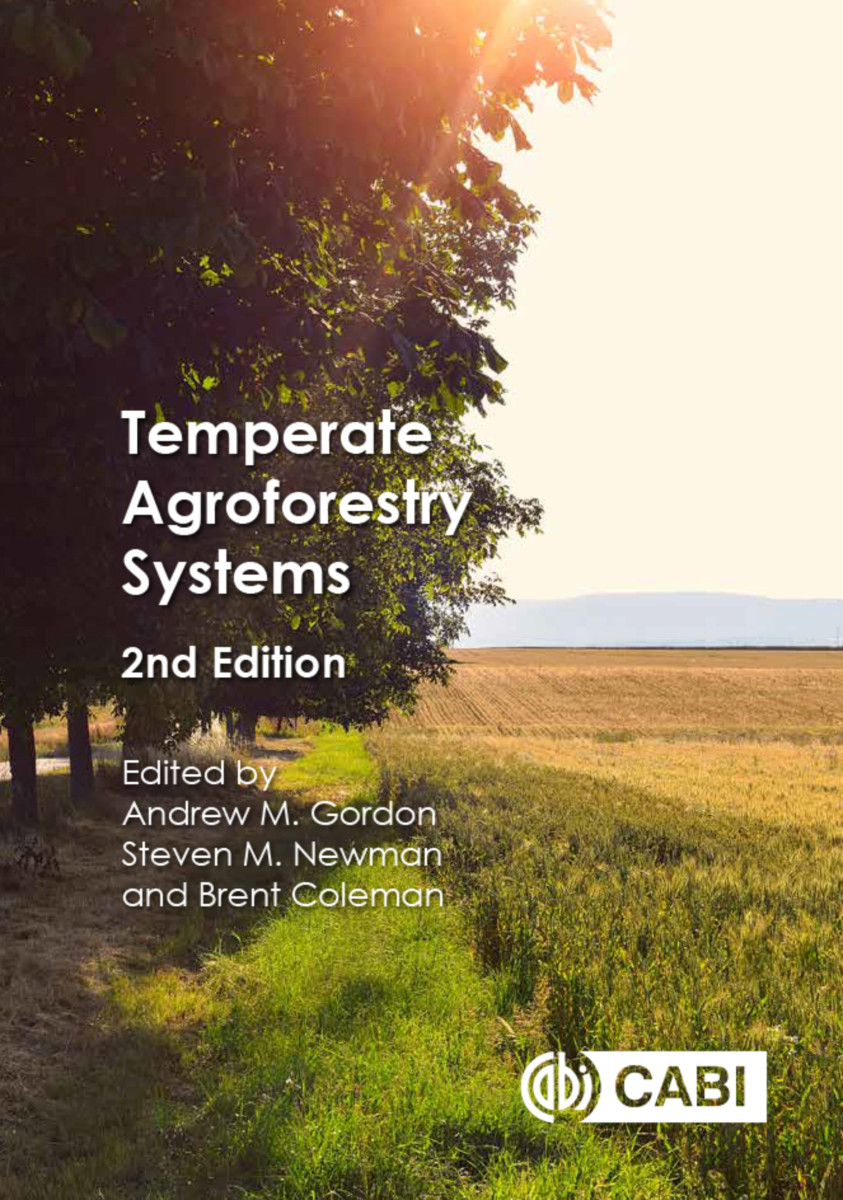Temperate Agroforestry Systems Edition 2
- Publisher
CABI - Published
15th February 2022 - ISBN 9781780644868
- Language English
- Pages 328 pp.
- Size 7.5" x 9.625"
- Publisher
CABI - Published
12th April 2018 - ISBN 9781780644851
- Language English
- Pages 328 pp.
- Size 7.5" x 9.625"
Agroforestry is a land use system that allows for the concurrent production of trees and agricultural crops and/or animals from the same piece of land. It has a rich history of development and has been practiced in some parts of the world for more than 6,000 years. In 1997, CABI published the seminal book on this subject, Temperate Agroforestry Systems, which was a break from the norm as almost all agroforestry texts up to that date were only relevant to tropical areas. The book explored the development of temperate agroforestry and agroforestry systems, concentrating on those areas within temperate zones where the greatest advances, adoptions and modifications had taken place up to that time: North and South America, China, Australia, New Zealand and Europe.
This second fully-updated and expanded edition includes additional chapters on India and Chile and, as a result of ongoing advances in the field, separate chapters on the US, Canada, the UK, and continental Europe. Today's challenges of climate change, population growth and food security, in concert with the ongoing global requirement for the energy and water needed for a resilient agricultural paradigm, can be met through the wide-scale adoption of agroforestry practices, in both tropical regions and temperate zones. The second edition of Temperate Agroforestry Systems brings together many examples of temperate agroforestry and will make valuable reading for all those working in this area as researchers, practitioners and policy makers. The book is also of importance to students and teachers of agriculture, ecology, environmental studies and forestry in temperate regions.
"It gives a good starting point for brainstorming new systems for a given region that can draw explicitly on the lessons learned in other temperate regions. In many chapters, the discussions of systems are complex and thorough (e.g. UK, Europe and Indian Himalayan Region). In others, they describe previously unsuggested, novel systems (e.g. Chile) that are just now being developed."
Kyle Rose, PhD., New Mexico Highlands University - Society of American Foresters Newsletter June 2018
1: Temperate Agroforestry: An Overview
2: Agroforestry in Canada and its Role in Farming Systems
3: Temperate Agroforestry in the United States: Current Trends and Future Directions
4: Agroforestry in the United Kingdom
5: Temperate Agroforestry: The European Way
6: Agroforestry in the Indian Himalayan Region: An Overview
7: Temperate Agroforestry in China
8: Agroforestry Systems in Temperate Australia
9: Temperate Agroforestry Systems in New Zealand
10: Novel Agroforestry Systems in Temperate Chile
11: Silvopastoral systems in Patagonia, Argentina
12: Temperate Agroforestry: Key Elements, Current Limits and Opportunities for the Future
Andrew M. Gordon
Andrew M. Gordon is with the University of Guelph, Canada.
Scott M. Newman
Scott M. Newman is formerly of University of Leeds, UK.
Brent Coleman
Brent Coleman is with University of Guelph, Canada.


